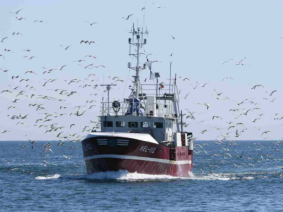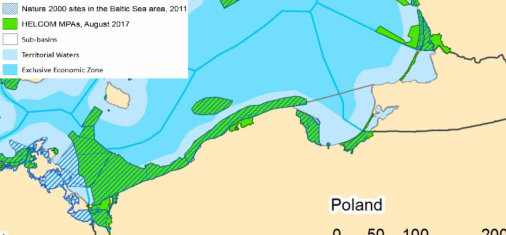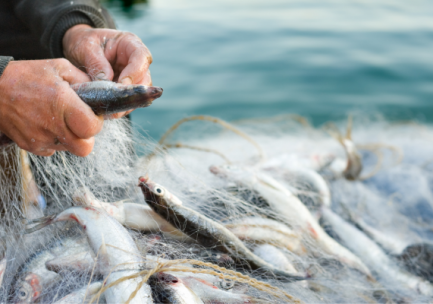
Sustainable fisheries
Sustainable fisheries
The basic goal of sustainable fisheries is to preserve the biodiversity of the seas and oceans and at the same time meet the needs of consumers with the least possible impact on the marine environment. Such approach does not only help to protect biodiversity, but maintains adequate density of the fish stocks and increases the likelihood that future generations will also be able to benefit from the marine resources.
According to the Food and Agriculture Organisation of the United Nations Sofia 2020 report, the long term trend in fisheries has been rather stable from the 1980s and ranges from 86 million tonnes to 93 million fish per year. In 2018, total global capture fisheries production reached the highest level ever recorded at 96.4 million tonnes –– an increase of 5.4 percent from the average of the previous three years. We must bear in mind that over 30% of the global fish stocks are overfished, which means that they are exploited at the rate that prevents their natural restoration. Approximately 60% of fish stocks are fully fished and require the implementation of the principles of sustainable fisheries.
Responsible decisions in fisheries management should take into account environmental, social and economic issues. Is the goal always to fish less? Not necessarily. Sustainable catches should be maintained at a certain level, i.e. maximum sustainable yield (MSY). MSY Maximum Sustainable Yield is the largest yield (or catch) that can be taken from a species' stock over an indefinite period. The concept of MSY aims to maintain the population size at the point of maximum growth rate by harvesting the individuals that would normally be added to the population, allowing the population to continue to be productive indefinitely.
Selective fishing methods are needed to preserve the good state of stocks and biodiversity. The choice of the fishing method (fishing gear) is an integral part of sustainable fisheries. Sustainable fisheries is not possible with methods and gears which have a direct negative impact on the ecosystem, even if the fish stocks are not in danger. The impact of physical contact of bottom trawls may affect biological communities as well as the chemical and physical environment. A major challenge in ecosystems and resource management, however, is the judgment on the degree to which an impact is considered acceptable. The use of bottom trawls should be avoided in areas with fragile benthic habitats. Selective gears are also designed to avoid unwanted catches (bycatches) of undersized fish, non-target species as well as seabirds and marine mammals.
Marine Protected Areas (MPAs) are areas of the seas and oceans set aside for long-term conservation aims. They are the mainstream conservation-focussed, area-based measure to increase the quality and extent of protection. MPAs and their network offer nature-based solution to support global efforts towards climate change adaptation and mitigation (IUCN). MPAs cover 5.7% of the world’s oceans. We are still far from reaching the objectives of the International Union for conservation of Nature which is to cover 30% of the seas and oceans with protected areas by 2030.
According to HELCOM, the aim of the coastal and marine Baltic Sea protected areas is to protect valuable marine and coastal habitats in the Baltic Sea. This is done by designating sites with particular nature values as protected areas, and by managing human activities within those areas. Each site has its unique management plan with special conservation measures.
In Poland we have 9 HELCOM MPAs. They account for 24% of the marine area and 55% f territorial waters. In addition we have Natura 2000 sites in the Baltic, which are aimed at protecting valuable species and habitats.
Closed fishing periods, closed areas and a minimum landing size for different species are set in order to protect fish during spawning, as well as to avoid the catch of juvenile and undersized fish. These periods correspond to the biology of a given species.
The objective of the EU Common Fisheries Policy (CFP) is to ensure sustainable fisheries, to achieve economic benefits and to secure a food supply and enable recreational fishing opportunities through the highest possible sustained catches of commercial fish. Fisheries Policy (CFP) is also the key to measure for rebuilding the fish stocks to a sustainable level. Raising public awareness on the need to ensure sustainable exploitation of the living resources is also a key element. The MARE Foundation is active in raising the awareness on the effect of everyday consumer choices on the fish stocks. We cooperate, among others, with the Marine Stewardship Council (MSC Poland) and educate people on how to make responsible choices, which help to rebuild and maintain the healthy fish stocks.
Since 2019, the MARE Foundation has coordinated the assessment process of the Polish flatfish and pelagic fisheries against the standards of MSC. The process has been prolonged due to COVID-19. In October 2021, the Polish flatfish trawl and gillnet and the Polish sprat fishery has achieved certification to the Marine Stewardship Council’s (MSC) globally recognised standard for sustainable fishing.
WHAT CAN YOU DO?
Your everyday choices influence the state of the environment. Follow these simple principles:
- Do not buy young, undersized fish, which have not had a chance to reproduce;
- Look where the fish come from and choose fish which comes from stable and sustainably exploited stocks;
- Choose the fish from local fisheries, they are fresh and transported on short distances;
- Buy those species which are not threatened with extinction;
- Buy certified fish products: look for MSC (for wild fish and seafood) and ASC (for fish from aquaculture).



